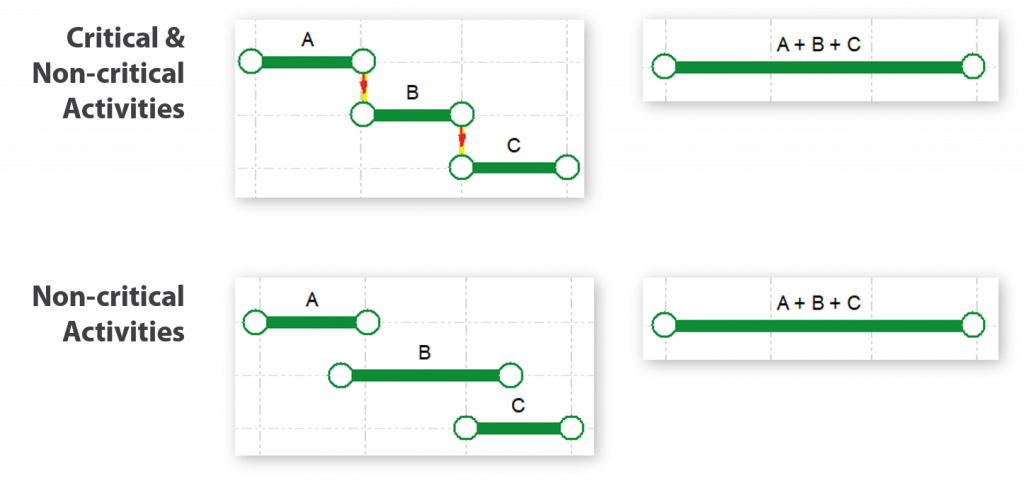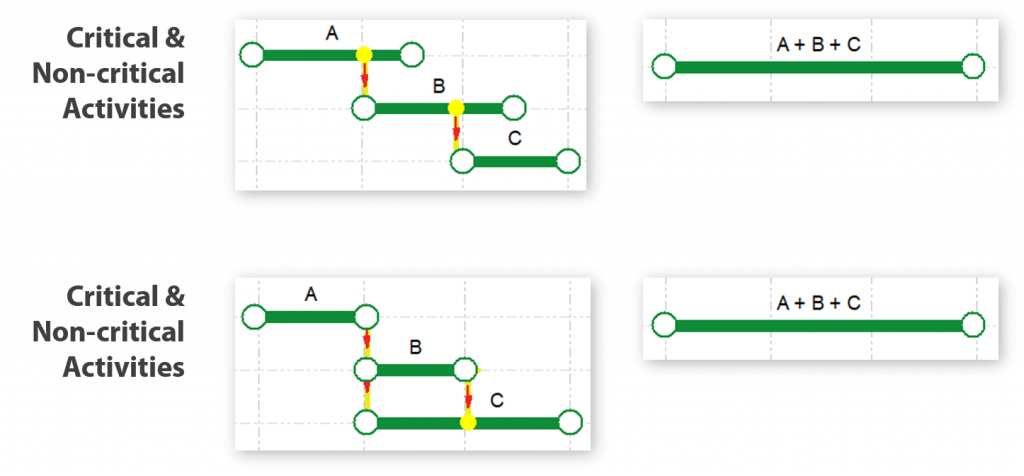Analyzing exhaustive, complex schedules is often overwhelming for non-schedulers. What if you could take a multi-page schedule and condense it into a one-page summary schedule that is easy for the entire project team to understand? An independent scheduling consultant can serve the owner as well as other stakeholders by creating a summary schedule that all can manage.
Case Study: Tissue Paper Manufacturing Plant
I was recently hired by an engineering firm to provide schedule management, budget management, earned value tracking, and commissioning schedule development for a $400M tissue paper manufacturing plant.

Why a summary schedule?
The project had multiple design and construction contracts and 200+ systems to commission. This translated into a 46-page P6 commissioning schedule that was simply too big to manage and effectively communicate with the project team.
When commissioning begins and you need to track progress on a day-to-day basis, you need a detailed P6 schedule to monitor the work. Unlike construction schedules, a commissioning schedule is planned by the hour and not by the day. Every hour counts when you are trying to get a tissue paper manufacturing machine up and running! With this degree of detail, it becomes challenging to depict the workflow and understand the plan the team has in mind.
If you do not understand the plan, you cannot understand the issues. People often become overwhelmed when looking at a P6 schedule so they do not talk about it. By design, P6 may have multiple activities linked on different pages and it is difficult to discern from a printout. When I was invited to a 4-hour meeting scheduled with all stakeholders to review the commissioning schedule and discuss strategies to improve the completion date, I knew a 46-page schedule would not work.
What makes a good summary schedule?
I set forth to present the information in the simplest way possible so that everybody understood the issues in minimum time. I used NetPoint, a real-time, planning and scheduling application, to summarize the entire 46-page schedule into one page. The team needed to know: What was the problem? Why is this happening? How do we resolve this?
The steps I used to summarize the schedule included:
- Identify
- Identify the critical path in the project and summarize it in NetPoint.
- Define the near-critical path in the project and summarize it in NetPoint. This path will vary from project-to-project depending on its duration, size, update frequency & schedule sensitivity.
- Include important activities in the summary with the intent to gain the audiences’ trust. Important activities for stakeholders could be major milestones, primary interfaces, high duration activities, significant scope items, or activities that were problematic in previous projects.
- Condense
- Activities from P6 can be condensed in NetPoint as depicted in the examples below:


-
- Understand your audience and to what level you need to summarize.



3. Simplify
-
- Simplify condensed activities. This is often a trial and error process. Try a different grouping approach, color-coding, fade non-critical activities, criticality, further condensation, or a waterfall approach to convey the story. The objective of this step is to:
- Not overwhelm your audience
- Convey the message in minimal time
- Provide the ability to follow logic
- Simplify condensed activities. This is often a trial and error process. Try a different grouping approach, color-coding, fade non-critical activities, criticality, further condensation, or a waterfall approach to convey the story. The objective of this step is to:
Current View

Different Grouping Approach

Color Coding Approach

Fade Non-critical Activities Approach

Criticality Approach

Further Condense Approach

Results
By showing the project team the plan at a summary level, I am reinforcing the plan. Is this what we are really doing? If it is correct, we can talk and fix the issues in real time. It creates a dialogue for the whole team who need to understand how they interface in order to work together.
The summary schedule was able to show that commissioning was starting late and reminded the team to check and confirm all the prerequisites required to start the work. It also helped the team understand that the vendor was now requesting additional time for certain systems. Moreover, the team understood the construction contractors’ sequencing of completing the systems was not in line with the commissioning plan. The 4-hour meeting, with all 20 key people, was finished in 40 minutes. All parties had a clear understanding and a usable project plan.
Why did I choose NetPoint?
I needed a platform to communicate the problems and NetPoint allowed me to show a picture from a very high level. The graphical interface is nowhere close to the tabular format that P6 and Microsoft Project provides. In a nutshell, NetPoint provides a canvas for you to draw the network logic. There are no columns to match up, and you can see the actual flow of the work. Similar to Activity Network diagrams of the past, NetPoint brings the focus back to a network view that is easy for everyone to understand. Using NetPoint, I showed them the picture and they gave me the answers. We developed solutions and solved problems together in real time.
 Reniz Moosa, PMP, is a project controls professional with significant experience in providing planning and scheduling services for mid-cap and mega projects. He is skilled in applying project controls principles to build, update, and track complex construction projects from project initiation to closeout. For more information about NetPoint, please contact info@pmatechnologies.com.
Reniz Moosa, PMP, is a project controls professional with significant experience in providing planning and scheduling services for mid-cap and mega projects. He is skilled in applying project controls principles to build, update, and track complex construction projects from project initiation to closeout. For more information about NetPoint, please contact info@pmatechnologies.com.